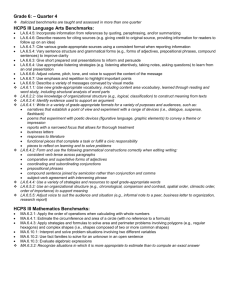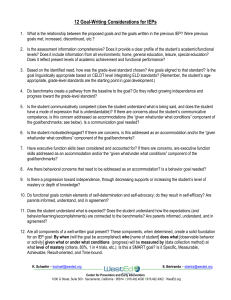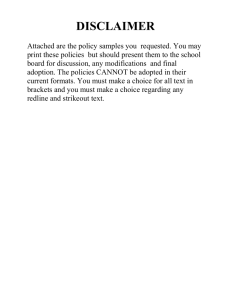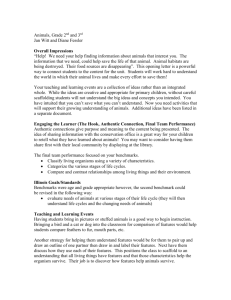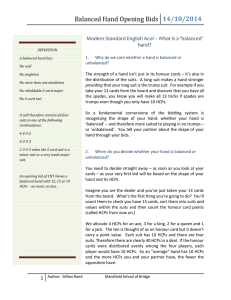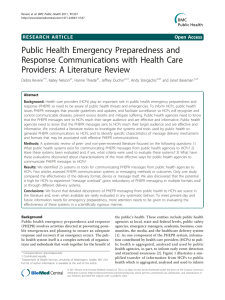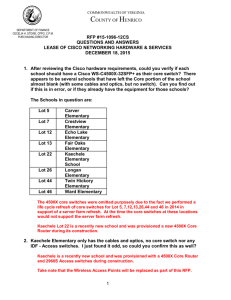Gr6Q1Bnchmk - Standards
advertisement
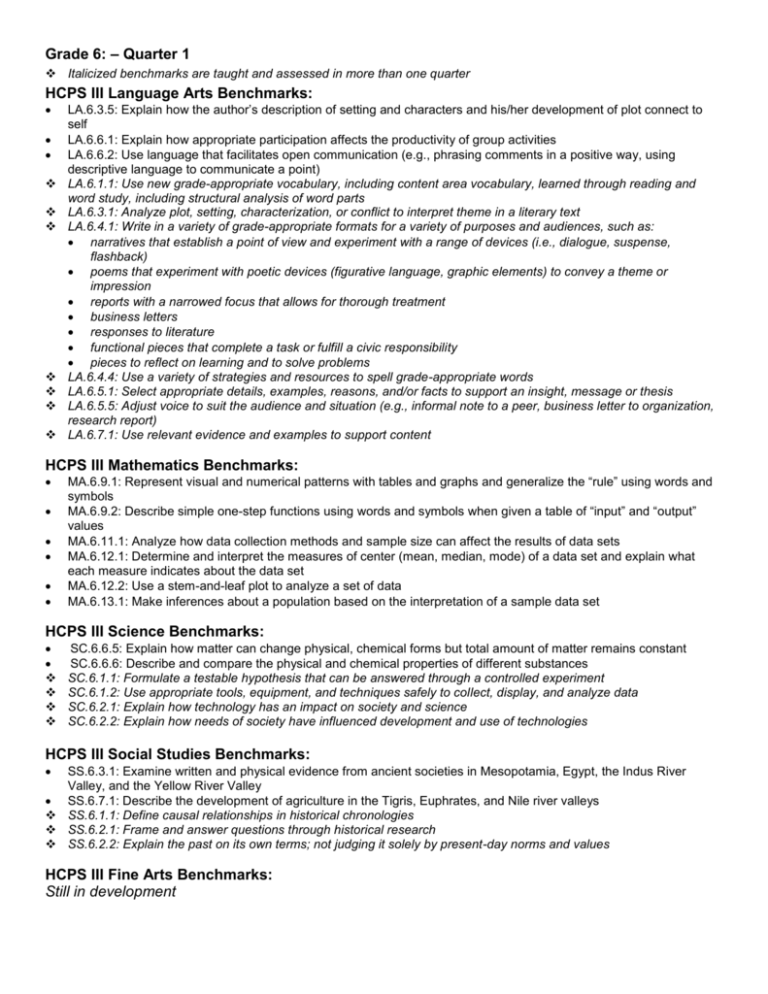
Grade 6: – Quarter 1 Italicized benchmarks are taught and assessed in more than one quarter HCPS III Language Arts Benchmarks: LA.6.3.5: Explain how the author’s description of setting and characters and his/her development of plot connect to self LA.6.6.1: Explain how appropriate participation affects the productivity of group activities LA.6.6.2: Use language that facilitates open communication (e.g., phrasing comments in a positive way, using descriptive language to communicate a point) LA.6.1.1: Use new grade-appropriate vocabulary, including content area vocabulary, learned through reading and word study, including structural analysis of word parts LA.6.3.1: Analyze plot, setting, characterization, or conflict to interpret theme in a literary text LA.6.4.1: Write in a variety of grade-appropriate formats for a variety of purposes and audiences, such as: narratives that establish a point of view and experiment with a range of devices (i.e., dialogue, suspense, flashback) poems that experiment with poetic devices (figurative language, graphic elements) to convey a theme or impression reports with a narrowed focus that allows for thorough treatment business letters responses to literature functional pieces that complete a task or fulfill a civic responsibility pieces to reflect on learning and to solve problems LA.6.4.4: Use a variety of strategies and resources to spell grade-appropriate words LA.6.5.1: Select appropriate details, examples, reasons, and/or facts to support an insight, message or thesis LA.6.5.5: Adjust voice to suit the audience and situation (e.g., informal note to a peer, business letter to organization, research report) LA.6.7.1: Use relevant evidence and examples to support content HCPS III Mathematics Benchmarks: MA.6.9.1: Represent visual and numerical patterns with tables and graphs and generalize the “rule” using words and symbols MA.6.9.2: Describe simple one-step functions using words and symbols when given a table of “input” and “output” values MA.6.11.1: Analyze how data collection methods and sample size can affect the results of data sets MA.6.12.1: Determine and interpret the measures of center (mean, median, mode) of a data set and explain what each measure indicates about the data set MA.6.12.2: Use a stem-and-leaf plot to analyze a set of data MA.6.13.1: Make inferences about a population based on the interpretation of a sample data set HCPS III Science Benchmarks: SC.6.6.5: Explain how matter can change physical, chemical forms but total amount of matter remains constant SC.6.6.6: Describe and compare the physical and chemical properties of different substances SC.6.1.1: Formulate a testable hypothesis that can be answered through a controlled experiment SC.6.1.2: Use appropriate tools, equipment, and techniques safely to collect, display, and analyze data SC.6.2.1: Explain how technology has an impact on society and science SC.6.2.2: Explain how needs of society have influenced development and use of technologies HCPS III Social Studies Benchmarks: SS.6.3.1: Examine written and physical evidence from ancient societies in Mesopotamia, Egypt, the Indus River Valley, and the Yellow River Valley SS.6.7.1: Describe the development of agriculture in the Tigris, Euphrates, and Nile river valleys SS.6.1.1: Define causal relationships in historical chronologies SS.6.2.1: Frame and answer questions through historical research SS.6.2.2: Explain the past on its own terms; not judging it solely by present-day norms and values HCPS III Fine Arts Benchmarks: Still in development HCPS III Health Benchmarks: Topic: Healthy Eating and Physical Activity HE.6-8.1.2: Describe short and long-term effects and consequences of poor nutrition and lack of physical activity HE.6-8.2.1: Identify when it is necessary to access health services for self and others HE.6-8.2.2: Use appropriate sources to access valid health information, products, and services HE.6-8.4.1: Explain the influence of internal and external factors on health outcomes HE.6-8.5.1: Use effective verbal and non-verbal communication skills HE.6-8.5.2: Use effective behaviors that communicate care, consideration, and respect of self and others HE.6-8.6.1: Describe decision-making processes related to health-related decisions HE.6-8.6.2: Assess health-related decisions for consequences that affect oneself and others HE.6-8.6.3: Evaluate personal health strengths and risks to set personal goals HE.6-8.7.1: Use effective strategies to influence and support others in making healthful choices HE.6-8.7.2: Use appropriate methods to communicate accurate health information and ideas HE.6-8.7.3: Describe how barriers can affect the communication of information, ideas, feelings, and opinions HCPS III Physical Education Benchmarks: PE.6-8.2.2: Describe basic strategies for simple and modified activities PE.6-8.2.3: Apply rules and etiquette for safe participation in physical activities PE.6-8.3.1: Identify opportunities for physical activity outside of the physical education class HCPS III World Languages Benchmarks: WL.IS.6-8.4.1 Identify tangible and intangible products and practices of the target culture and compare them to other cultures WL.IS.6-8.1.1 Ask and answer social questions to get information or to maintain a conversation HCPS III Career and Technical Education Benchmarks: CTE.6.1.1: Develop a process to invent a product or procedure to meet a need or improve upon an existing technology CTE.6.2.1: Establish personal and learning goals related to career and life interests CTE.6.2.2: Explain the consequences of appropriate or inappropriate behavior in specific school, social, and work situations

